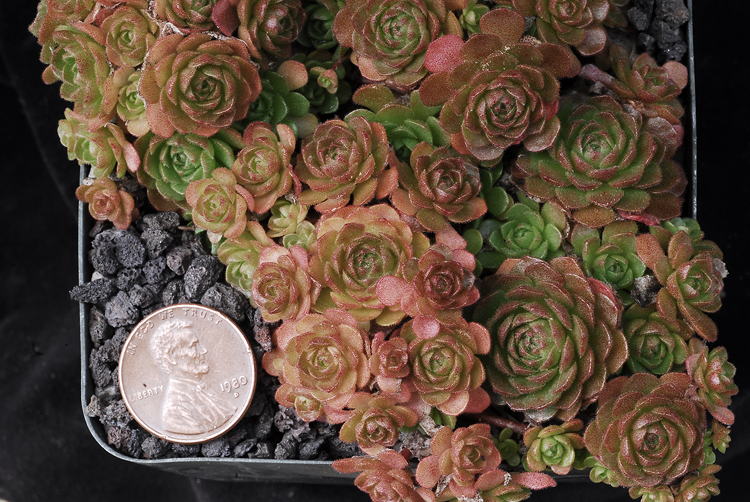Prometheum is a small genus of eight species variously included in other genera in the past, including Rosularia and Sedum, among others. These montane, rosette succulents range from northern Greece to Turkey, Armenia, the Caucasus, and northern Iran. The evocative generic name is derived from Prometheus, the Greek mythological figure who stole fire from Zeus and was chained to the Caucasus in punishment. However, P. muratdaghense is named after the small village of Muratdagi, in the Buharkent district of Aydin Province, in southwest Turkey. It was described in 1989 as Rosularia muratdaghense and transferred to Prometheum by Henk t’Hart ten years later. But that is not the end of the taxonomic machinations this small, unassuming plant has generated. In 2016, it was transferred, along with most of the other species of Prometheum, to a new genus Chaloupkaea Niederle. This was published in 2016 in the rather obscure Czech journal Skalničkářův rok. The author has chosen to reject t’Hart’s morphological and cytological justification for the genus Prometheum which is spelled out in the Crassulaceae volume of the Illustrated Handbook of Succulents. These include the absence of a well-developed caudex, lack of marginal cilia on the leaves, less connate petals than in Rosularia. It differs from the most closely related group of Sedum (series Cepaea) in its inflorescence shape and basic chromosome number of x = 7 vs. x = 11 in Cepaea. The small, to 3 cm (1 and 1/8 in) diameter, bright green rosettes clump to form tight cushions that blush orangish or red in cold, bright winter conditions. It has performed well in our shade house, suggesting a close similarity between our mediterranean climate and that of western Turkey. We offer divisions of HBG 128858, received from Myron Kimnach in July, 2014, without further data. $8.

Published in the Cactus and Succulent Journal, Vol. 95 (2), Summer 2023